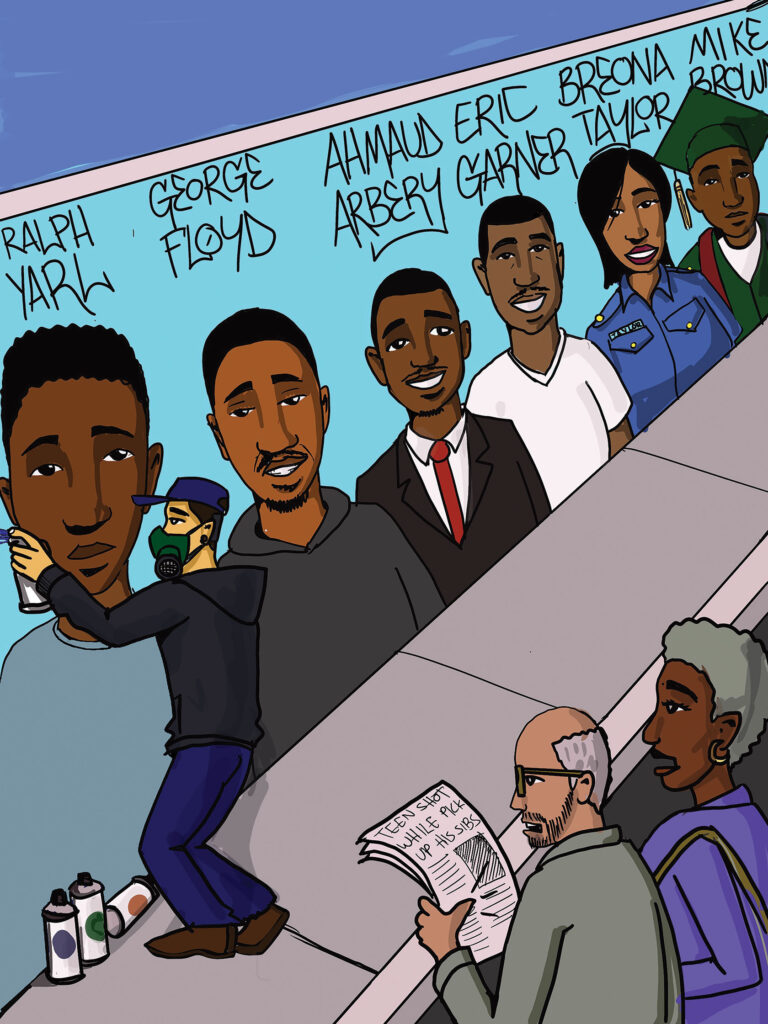
We live in a country where a Black teen named Ralph Yarl can get shot through a door twice, once in the head and once in the arm, as he lay on the ground. All for ringing the doorbell of the wrong house in Kansas City, Mo. He had the house number right but was on a street with the right name instead of the terrace, while trying to pick up his two younger brothers, the kind of mistake we have all made. For that, he was shot two times. If being shot twice was not bad enough, he had to run to three different homes to get help because others turned him away.
This kind of dehumanization of our Black lives can only happen after centuries of depicting us as subhuman, starting with our enslavement up to the current day. Many major media outlets spread negative images and narratives about Black people and culture. These representations continue to feed the fear, longstanding racism and hatred used to justify these types of dehumanizing actions against us.
The times we live in are challenging to our minds, bodies and spirits. For our spirits to survive, we as a people have to do what we have always done. We must focus on our art and culture for the strength to keep going in the face of this kind of unspeakable brutality.
The oppression our ancestors endured was unimaginable, yet they not only survived but persevered. Our ancestors created a rich and profound legacy of art, Black music, dance, literature, and visual art.
Black life then was more repressed and constrained, but as long as outward behavior was considered subservient Black life remained largely ignored and unseen. In those unseen spaces creativity flourished as our ancestors expressed themselves authentically despite overwhelming oppression.
Whether it was “out in the open,” like the songs of the chain gang that controlled the pace of exerted labor, or in unseen places like after-hours in juke joints in the backwoods, African Americans found a way out of no way to create vibrant music. The blues that emanated from plantation fields into juke joints and later into brothels as ragtime then reinvented into the swing of dance halls was at the time considered the devil’s music by the dominant culture. But we continued to create art by ourselves and for ourselves.
Black art became a movement, spurred along by Emancipation and the Great Migration when many of our ancestors left the sharecropping fields of the South for the promise of work and less oppression in the cities of the North. What they found when they arrived was not a Promised Land but a more confined space for their creativity to flourish. By 1920, 300,000 Black Americans from the South had moved North.
Harlem was one of the most popular destinations. A newfound activism began to be infused in the art that conveyed a message of Black pride. Harlem soon became a cultural center where social and artistic expression flourished. The time between 1910 and the late 1920s became known as the Harlem Renaissance, producing great art in literature, music, stage performance and visual arts. Civil rights activist W.E.B. Dubois, writer Langston Hughes, writer Zora Neale Hurston, poet Paul Lawrence Dunbar, sculptor Augusta Savage and others set the foundations to uplift the community and cultivate Black identity. In this new space that Black artists carved out within northern segregation expression and creativity gained new heights.
After residential and school desegregation in the 1970s and 1980s, that space and place where Blacks once had artistic freedom was reduced. Institutional racism polluted educational systems, using dominant ideologies and coercion to stifle gifted and talented Black students. The imposition of dominant cultural norms eroded confidence and suppressed the Black creative mind through rejection, dampening motivation.
Now more than ever we need Black art and the artists who create it to continue to carry us through these kinds of inconceivable realities we live in like Ralph Yarl shooting and the choking murder of George Floyd. Artists are both the forefront of change and critical to the preservation of culture. From the artists of the Harlem Renaissance, whose art opened our minds to the possibilities of another world to the George Floyd murals that humanize this poor victim, we are reminded we’re all in this together. African American art nourishes our souls but challenges the dominant world view of us, by envisioning new ways of seeing us and how we can be in the world.







